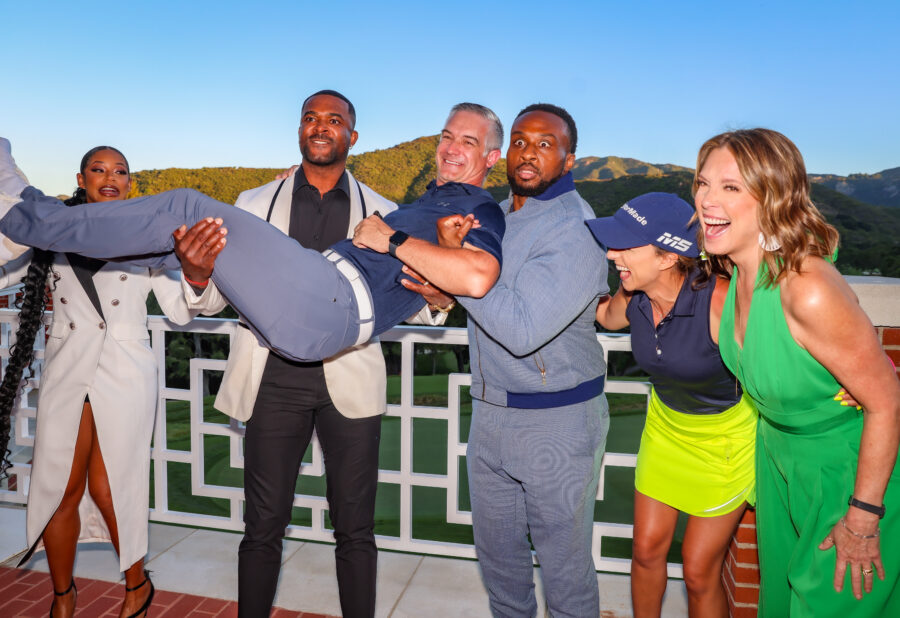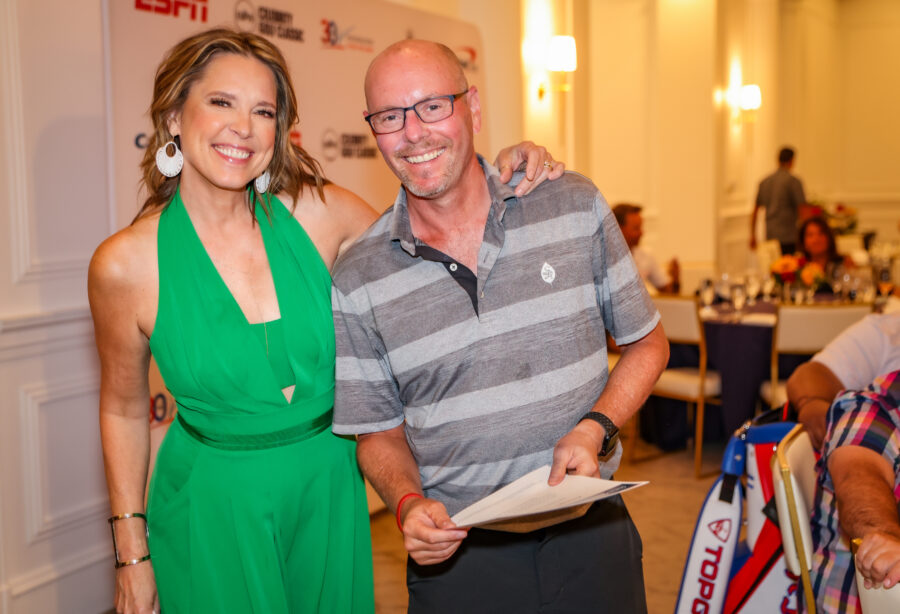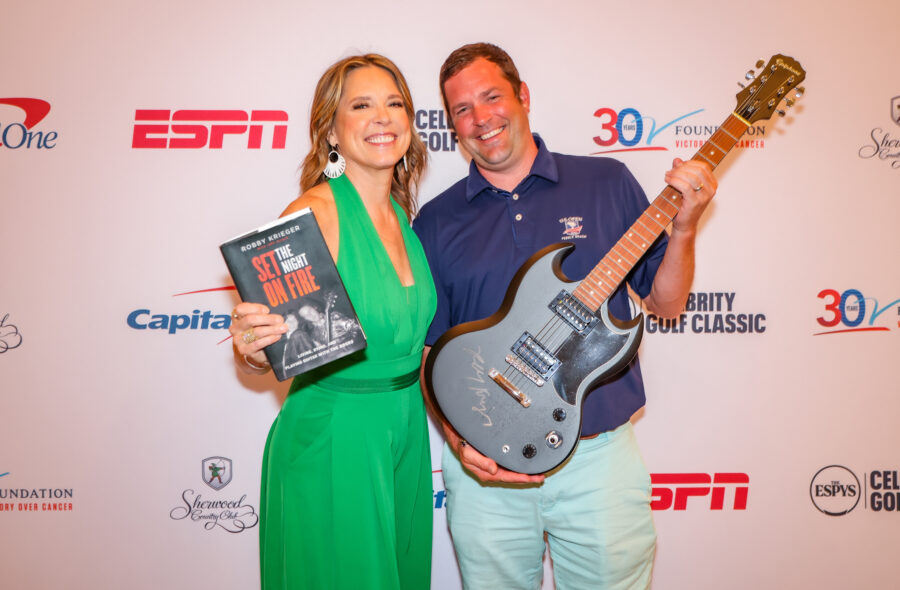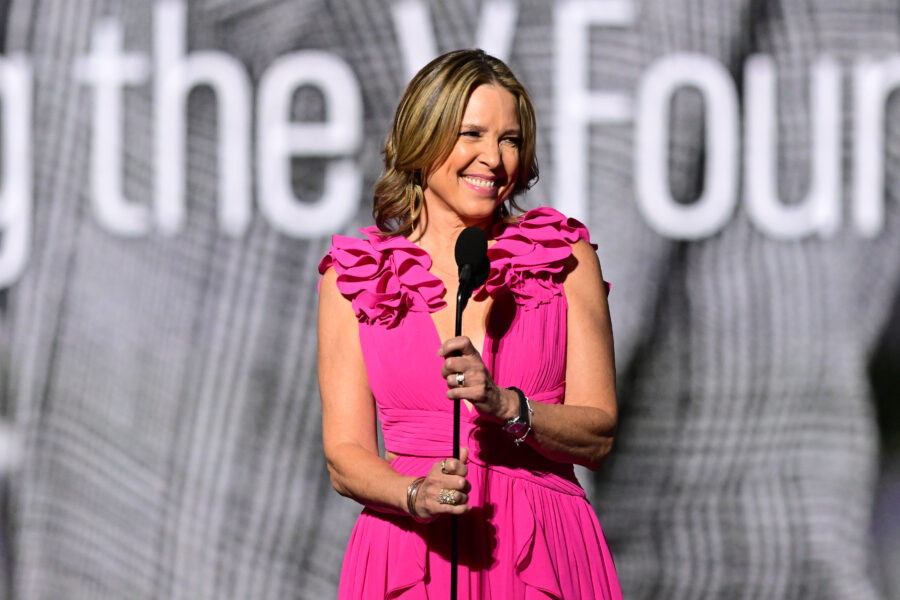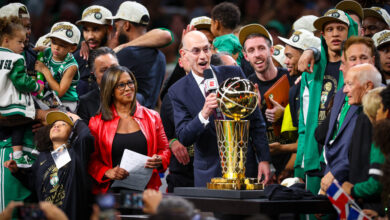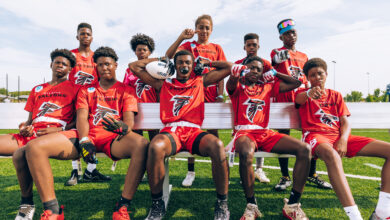SportsCenter’s Hannah Storm Shares Her Journey After Recent Early Stage Breast Cancer Detection
"You're not going to die from this" - her doctor's reassuring words - offered strength and optimism as Storm navigated treatment for DCIS over the past several months, with support from Dr. Elisa Port, her husband Dan Hicks, her daughters, Chris Evert, and her friends
EDITOR’S NOTE: ESPN anchor Hannah Storm was recently diagnosed with a treatable form of breast cancer. She decided to share the extensive details of her personal journey as a way to demystify the process, and illustrate the importance of regular breast cancer screening and self -advocacy. On Tuesday, March 19, she revealed this news in a conversation with “Good Morning America” host Robin Roberts. She provides added perspective in this essay for Front Row.
It was after one of those crazy breaking news days on Sportscenter. I had been frantically called into work that morning, Jan. 11, rushing to Bristol because coach Bill Belichick and the New England Patriots had decided to part ways.
We would have a long show and special coverage of the press conference. I flew out of my house (still in slippers!), grabbing a handful of clothes on the go, my coffee left to grow cold on the kitchen counter.
It was a whirlwind day and a good one. I drove home with that satisfying feeling that I always get after a day of breaking news. I love to be in the middle of it!
Like any other day, I also had a long drive ahead of me: sometimes, it takes me close to two hours to get home, and I usually make phone calls to family and friends. But on this day, an unfamiliar number popped up. It was a call I never thought I would receive.
“IS NOW A GOOD TIME TO TALK?”
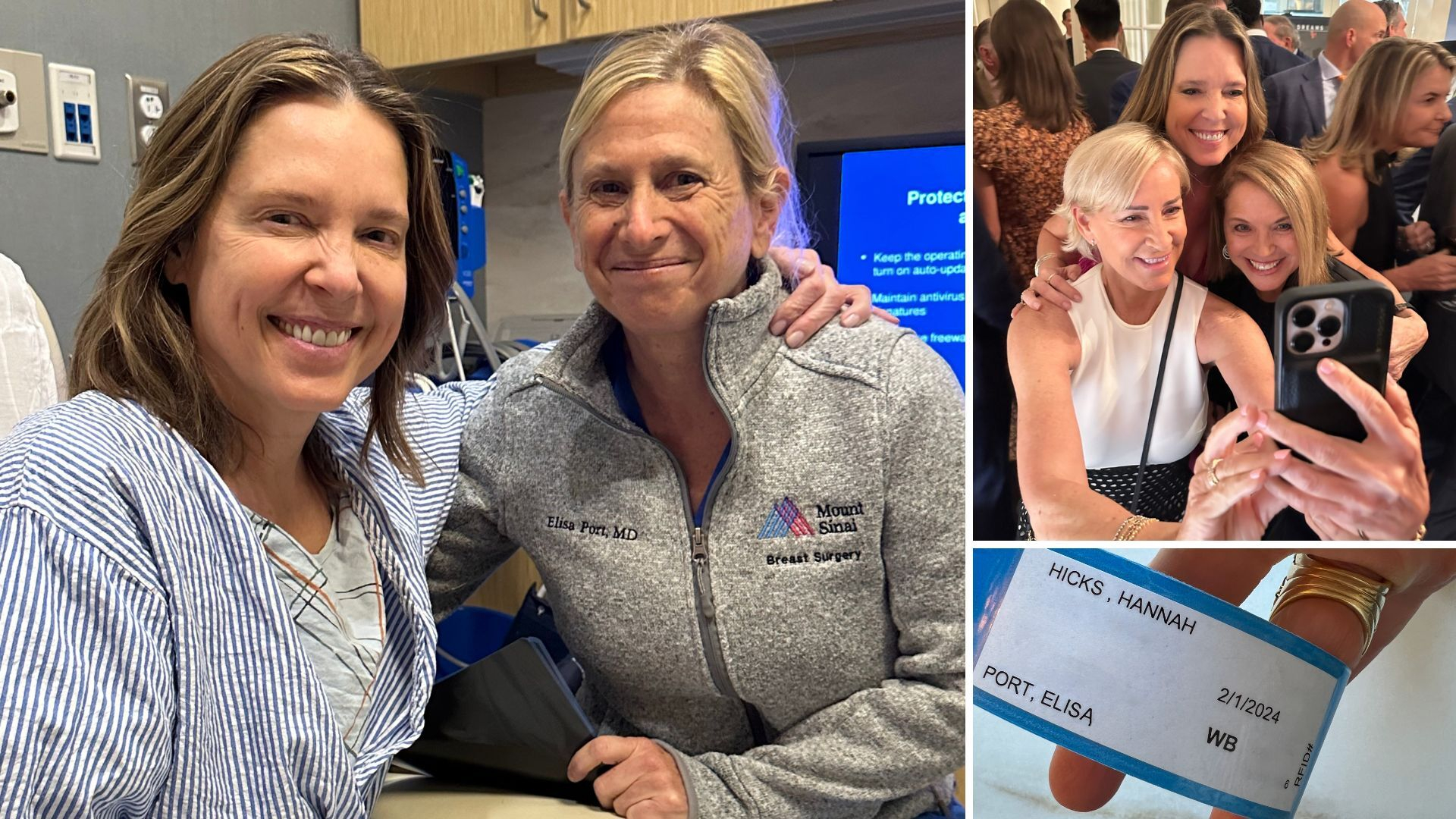
About six weeks beforehand, on Nov. 30, I had my first mammogram in 16 months. A mammogram is a low-energy X-ray of the breast. It’s not terribly painful, but it’s not at all pleasant. It consists of having your breasts smashed between two hard metal plates . . . both top to bottom and side to side, as you stand at awkward angles in front of a large, cold machine.
It’s not flawless, but it is the best screening tool available for breast cancer and is recommended starting at the age of 40. Many women dread it. More than a few women I know don’t do it regularly. They can’t be bothered to schedule it and aren’t concerned. I hope they are reading this.
Typically, you hear something almost immediately about the result, but several days after the mammogram, I still had no word, and neither did my gynecologist.
I thought that was strange—to simply hear nothing at all. As it turns out, the communication wasn’t made from the facility to my doctor. I decided to make several phone calls, and it took some real persistence to track them down within the healthcare system. I could have just assumed that no news was good news, as it always had been because I had never had any issues … but I’m glad I didn’t do that.
Then she delivered the news. She told me I had abnormal cells detected in my biopsy- something called DCIS.
I was eventually told, as I had been at times in the past, that I had “dense breasts” and would need further testing with an ultrasound. That means the breast is made up of a higher proportion of glandular tissue and fibrous tissue than fatty tissue, and a mammogram alone is unable to differentiate between tumorous tissue (bad) and dense tissue (just fine).
Anywhere from 40-50% of women have dense breasts. I had been asked to do an ultrasound before. I wasn’t concerned.
So, I took my time. I went through the holidays and then went to LA to host the Rose Parade, scheduling the ultrasound for after I returned, on Jan. 3.
An ultrasound is the same diagnostic tool used when a woman is pregnant. It produces visual images of internal body structures through sound waves. It consists of putting gel on the breast and applying light pressure with a probe on the surface of the breast. It’s a little chilly and sort of uncomfortable, but not painful.
This time, a call came fairly quickly.
The radiologist said there was a little cluster of cysts that she wanted to take a closer look at.
“It’s probably nothing,” were her words.
But this time, I acted right away to be sure and scheduled a biopsy one week later, on Jan. 10.
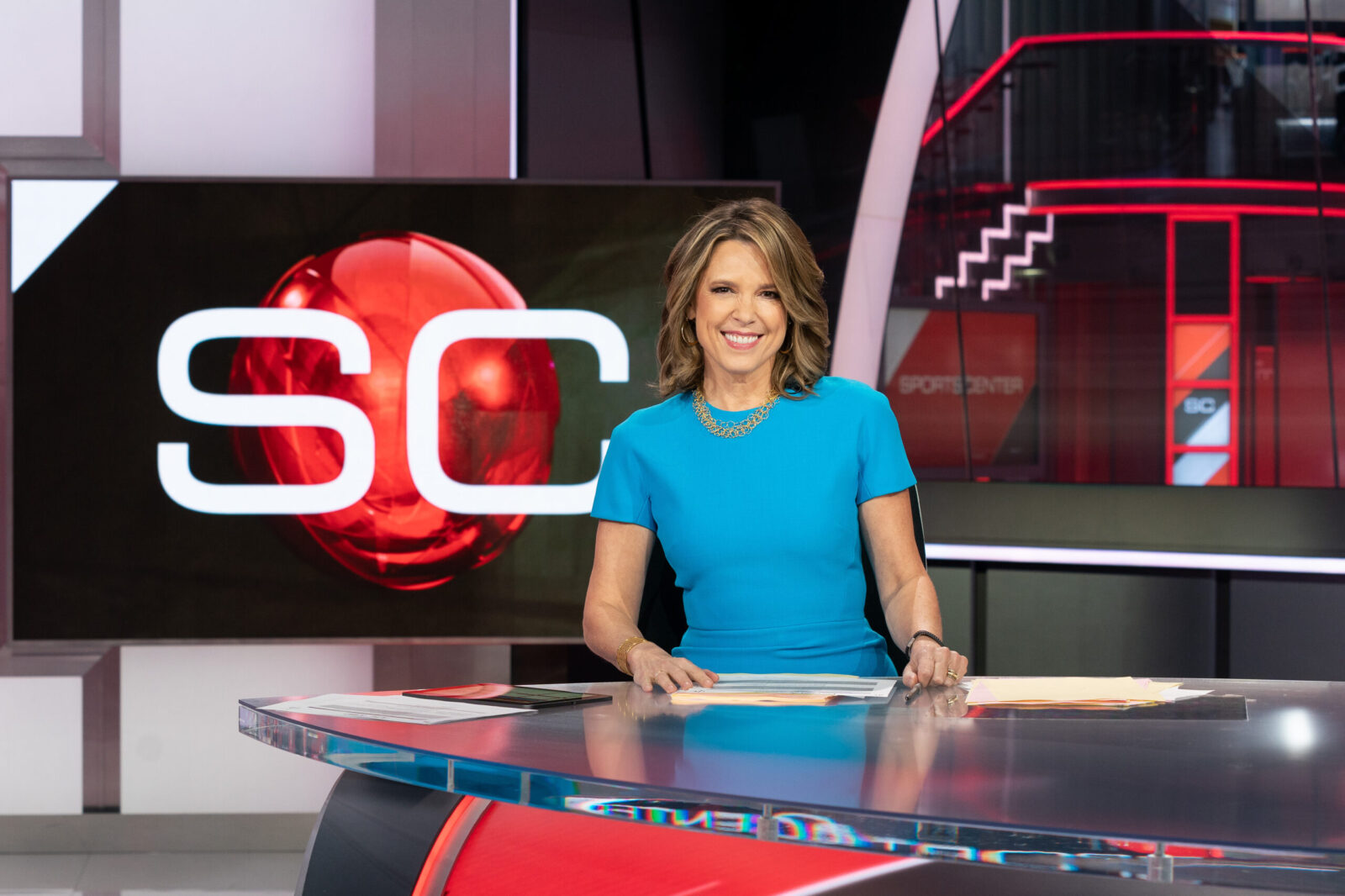
(Kelly Backus/ESPN Images)
For the biopsy, a pain shot was given into my left breast (the usual, “just a pinch”) and the doctor used ultrasound to guide her to the suspicious area, taking a needle and removing a small amount of tissue. They place a marker at the site of the suspicious area, a tiny metallic clip, so that it can be found later.
Honestly, you can’t feel this procedure at all after the anesthesia; you just feel pressure, and hear a loud “click” when the tissue is being extracted. You wear a sports bra for rest of the day, and maybe require a Tylenol. Not bad at all.
Then came Jan. 11… and that unfamiliar phone number.
It was the radiologist who said, “Is now a good time to talk?”
When she said, “Are you sure you don’t want to call me later, when you’re back home?” I knew something was up.
“I’m good, let’s talk,” I countered, and she began by saying, “I’m so surprised …”
Then she delivered the news. She told me I had abnormal cells detected in my biopsy- something called DCIS.
I KNEW WHERE TO TURN FOR GUIDANCE
Now, I don’t know about you, but I had never heard of DCIS, and neither had any of my friends. DCIS stands for Ductal Carcinoma in Situ. Sounds scary, right? It means that the cells in the lining of the ducts in your breast have changed to cancer cells, but they have not broken through the duct wall, and spread into the breast tissue. The earliest stage of breast cancer- Stage Zero. Non-invasive and treatable.
DCIS makes up about 20-25% of all breast cancers. The vast majority of cases are detected through screening, like mine.
I didn’t have a lump. I didn’t have pain.
My family has no history of breast cancer.
I am not genetically predisposed to breast cancer. (I had that tested as well, post-diagnosis).
In fact only one close relative of mine has even had cancer – my father, Mike, who died in 2020.
Here’s something I did not realize before this happened: 80-90% of women diagnosed with breast cancer have no pre-existing risk factors.
When breast cancer is detected early, survival rates can be higher than 90%, and for DCIS, as high as 98-99%.
There are very few cancers that are associated with such high cure rates.
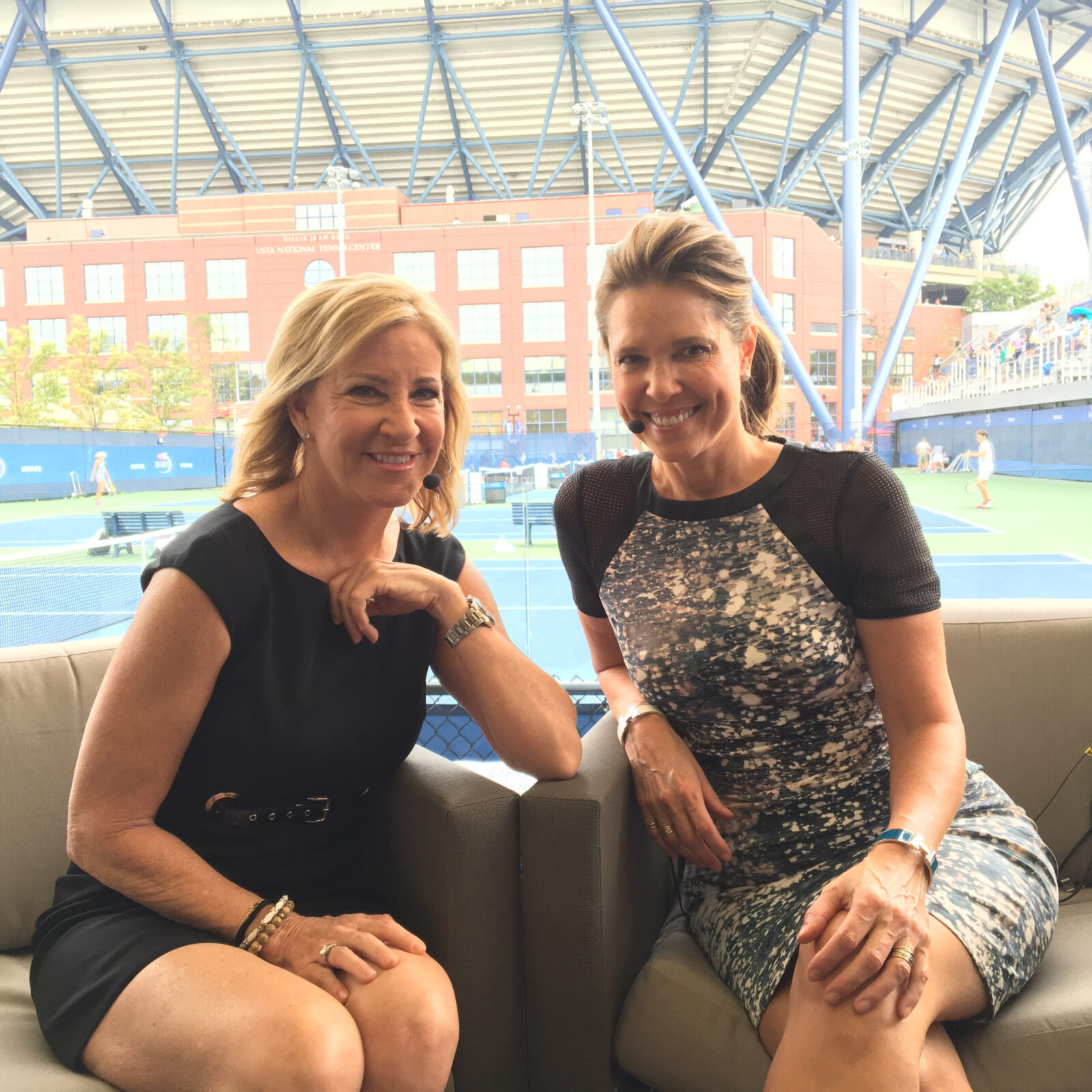
There are differing schools of thought and discussion about how to treat DCIS.
In most cases, surgery is part of the standard treatment.
Some choose to get a “lumpectomy,” where the lump is removed.
And some opt for a mastectomy, surgical removal of the entire breast.
Increasingly, there is a role for monitoring without surgery in selected cases.
Luckily, because of my friend and fellow ESPN commentator Chris Evert, I knew where to turn for guidance.
On Nov. 16, just a few days before my mammogram, Chrissie and I hosted a fundraiser for cancer research.
Chrissie was my first-ever female friend in the business.
I met her when I joined NBC in 1992 and hosted Wimbledon as my first assignment. I had never worked with a woman on air before – there were hardly any of us back then – and it was so great to be with her. We became immediate pals and worked together for many years at NBC and ESPN.
In 2009, I produced my first film, “Unmatched,” about her friendship and rivalry with Martina Navratilova.
It was one of the original 30 for 30 documentaries. Little did we know that years later, the two women would share something beyond tennis, united in their battles against cancer.
Chrissie has been through so much chemotherapy and surgery the last few years and doesn’t usually take on voluntary travel, but she agreed to make a rare trip for the fundraiser as a favor to me and my husband Dan Hicks. Chrissie stayed with us, and it was a special time, as we were able to reconnect.
Chrissie invited Elisa Port, the doctor who had performed her mastectomy, to the event, and I interviewed them both on stage. Elisa is the Chief Surgeon and Director of Dubin Breast Cancer Center at Mount Sinai and an extremely warm, empathetic person. We had a great time bonding that night with our friend Katie Couric, who shared her own breast cancer story in 2022.
Little did we know that Chrissie would return home the day after the fundraiser to find her cancer had returned. Or that I would be diagnosed less than two months later. The real blessing is that I knew exactly who to call.
“YOU’RE NOT GOING TO DIE FROM THIS”
I texted Dr. Port immediately when I got home from work the night of Jan. 11, and she called me right back.
She said, “You’re not going to die from this” – a phrase I have repeated again and again to panicked friends when first delivering the news.
It’s uncomfortable telling people that you have any kind of cancer diagnosis.
The word itself is just scary.
DCIS doesn’t sound nearly as frightening; it isn’t, but you have to explain it. That’s one of the reasons I wanted to tell this story.
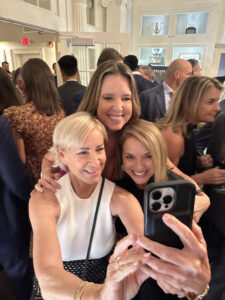
I told my circle of close friends and a handful of colleagues at work—they sent flowers and texts and it meant a LOT. Just letting someone know that you are thinking about them is so powerful. My perspective is, don’t ever be afraid to reach out, even if you don’t quite know what to say, because the person on the other end can feel your support.
My husband Dan and I went to see Dr. Port on Jan. 16.
We discussed all the options, and she recommended a lumpectomy, after doing another test- this time an MRI. I’m sure you’ve heard plenty about this in the sports world- it’s magnetic resonance imaging, where strong magnetic fields and radio waves produce images of the body.
For this one, I was lying on my stomach, arms overhead, with an IV in my hand, as a “contrast” agent was put into my system to get a better picture.
It lasted about a half hour and was loud and uncomfortable, but it’s another piece of information that is needed to make a decision about treatment.
If the two areas had been far away in the breast, that might have meant a mastectomy, but at this point, a lumpectomy would remove them. This surgery is just like how it sounds.
The MRI revealed a second suspicious area – close to the original area with the abnormal cells.
Close enough that Dr. Port could scoop them both out (my unscientific words!) in one fell swoop. If the two areas had been far away in the breast, that might have meant a mastectomy, but at this point, a lumpectomy would remove them.
This surgery is just like how it sounds.
They remove the “lump,” or INVOLVED area, as well as some healthy tissue around it, to make sure that all the abnormal tissue has been removed.
I had the surgery at Mount Sinai on Feb. 1, after a few busy days at work following NFL Conference Championship weekend.
I am grateful to have had work to occupy my thoughts. I had been assigned essays for each of the potential winners of the Super Bowl, which was happening in 10 days.
I also volunteered to write an essay on Taylor Swift and her impact on football for Sportscenter. The exercise of writing these essays was a blessing.
Even as I was waiting that morning for my pre-op procedure at Mt Sinai, I was working on my phone in GoogleD ocs, honing my thoughts on the defending champion Chiefs.
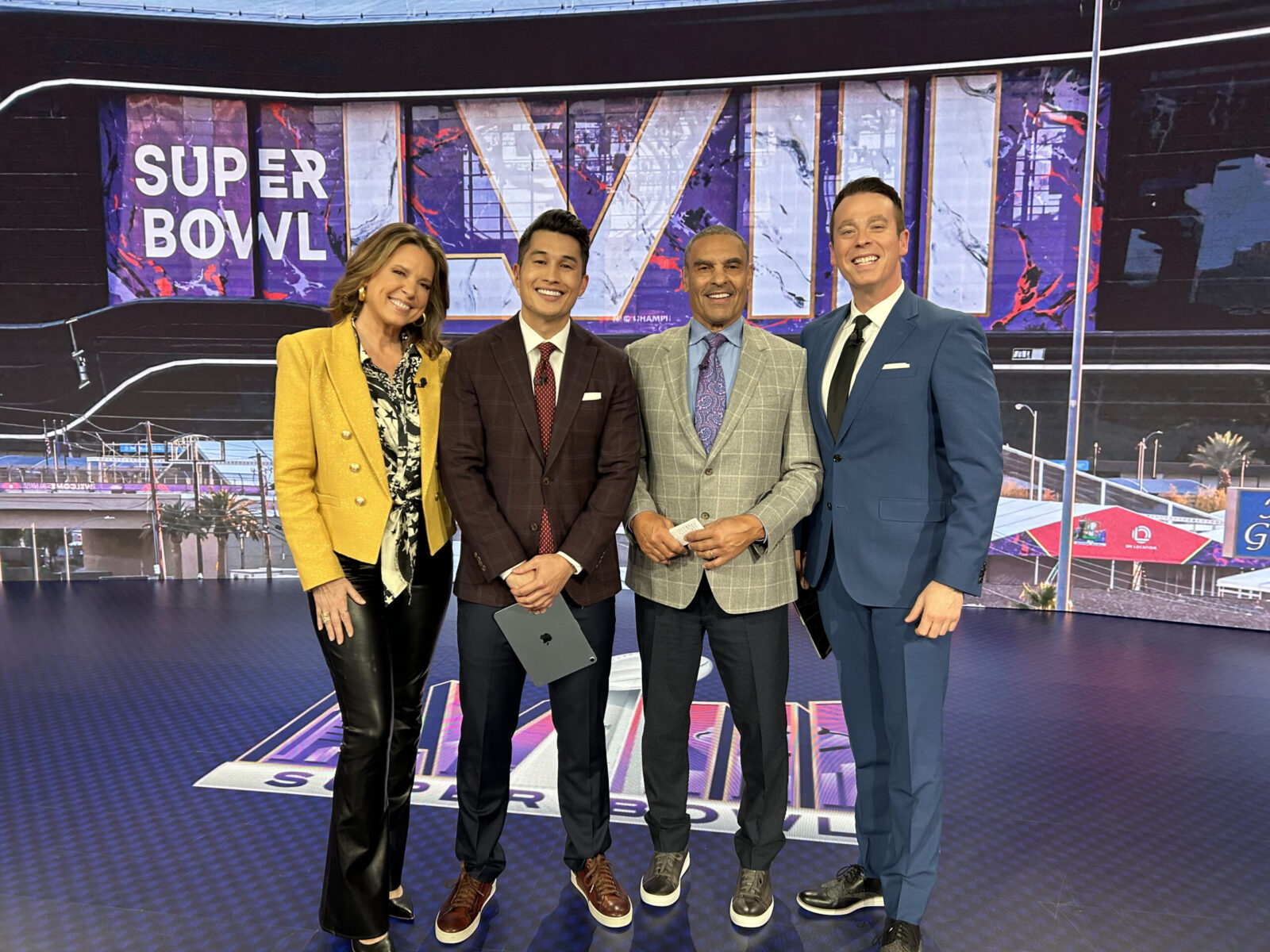
Before the lumpectomy, there was another ultrasound- remember the marker they inserted during the biopsy? They ran a tiny thin wire into the breast all the way until it reached that marker.
The wire acts as a roadmap for the surgeon to follow to the exact spot that needs to be taken out.
You don’t feel much except the anesthesia shots, but it’s wild to think about what they are actually doing, and that you have a wire protruding from your breast!
I mentioned that Dr. Port was really kind – and what struck me when she came to get me for surgery is that she actually walked me down the hall into the operating room, holding my hand.
That felt so good – I didn’t even know I needed that – but I did. And we spoke in those moments about how fortuitous it was that we had met during that cancer fundraiser through Chrissie.
You just never know who God is going to put into your path.
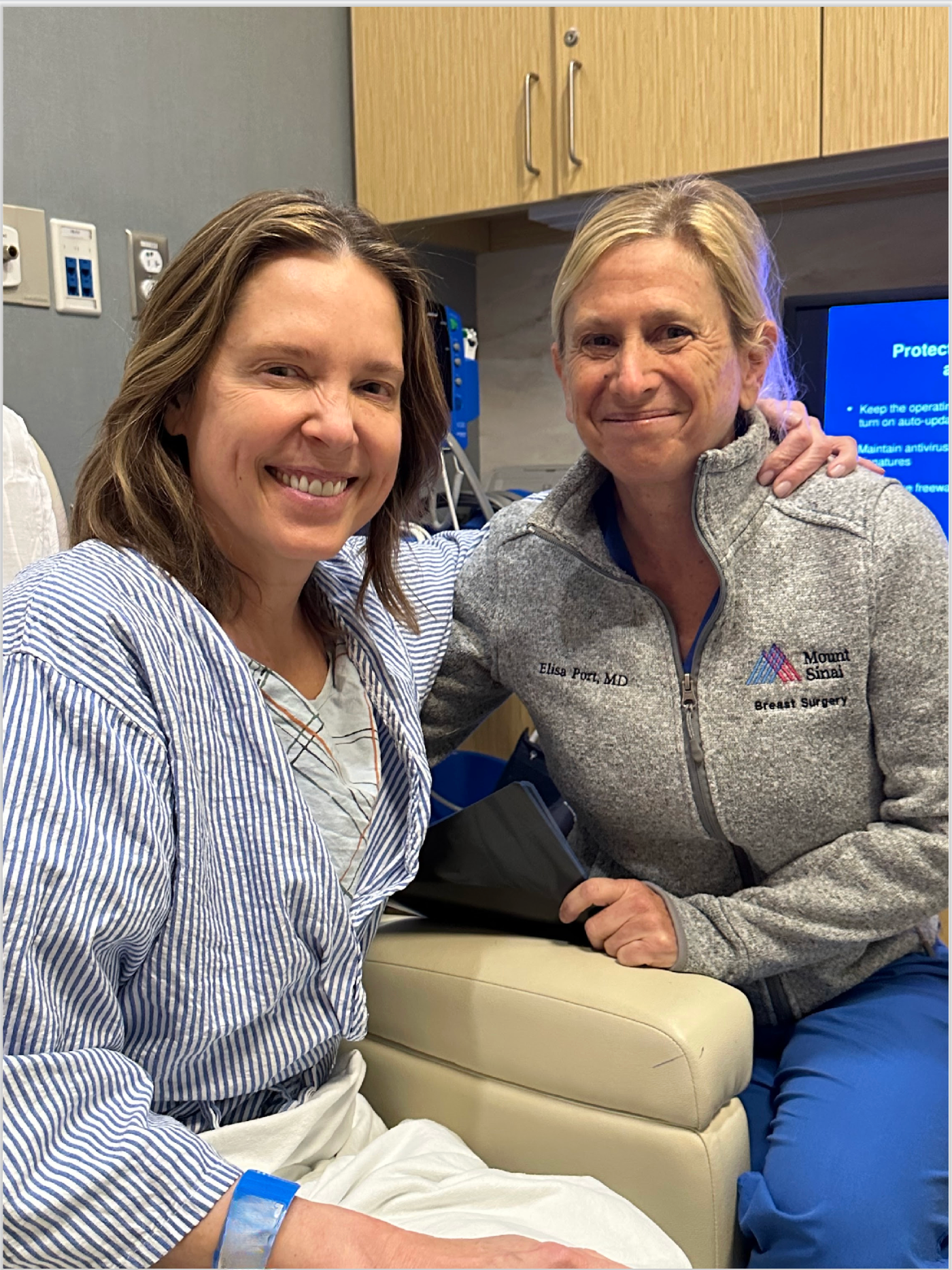
(Hannah Storm/ESPN)
In the operating room, she introduced me to her “team.”
Coming from a sports background, I really latched onto that concept.
It was comforting.
As they were inserting my IV, I kept saying things like “Awesome job!” as if I were cheering on my daughter’s field hockey team or something.
They thought that was hilarious — I guess they don’t get that often.
But it’s an important point when choosing a surgeon, Dr. Port says.
Really look at the “team” around them, because you are going to need several doctors who are dialed in on all the latest studies.
THE BEST NEWS POSSIBLE
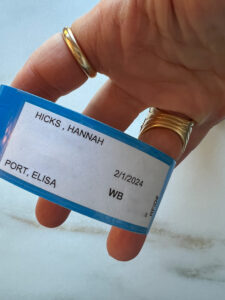
The surgery went well. I stayed out of work for a week and returned three days before the Super Bowl, grateful for the distraction of waiting.
There is a lot of waiting – for pathology reports and test results, and it helps stay busy and optimistic.
About a week later, Dr. Port delivered the best possible news from the pathology report on the surrounding tissue – she had removed everything, and there was no sign of cancer left in my breast. I am extremely lucky.
There’s more.
Women who have a lumpectomy often need some additional treatment to follow: radiation, medication, or both.
My new radiation oncologist ordered further testing on my tissue to determine the behavior of the abnormal cells.
This type of testing has only been around for a couple of years and gives information about the likelihood of a recurrence. In my case, it was determined that radiation would provide no additional benefit in terms of lowering my chances of getting breast cancer in the future.
I also have a new oncologist. My abnormal cells were found to be “HORMONE receptive,” which means they have receptors that allow them to use ESTROGEN AND progesterone to grow.
She explained there is a drug that blocks the HORMONES and that taking it can significantly lower my chances of a recurrence.
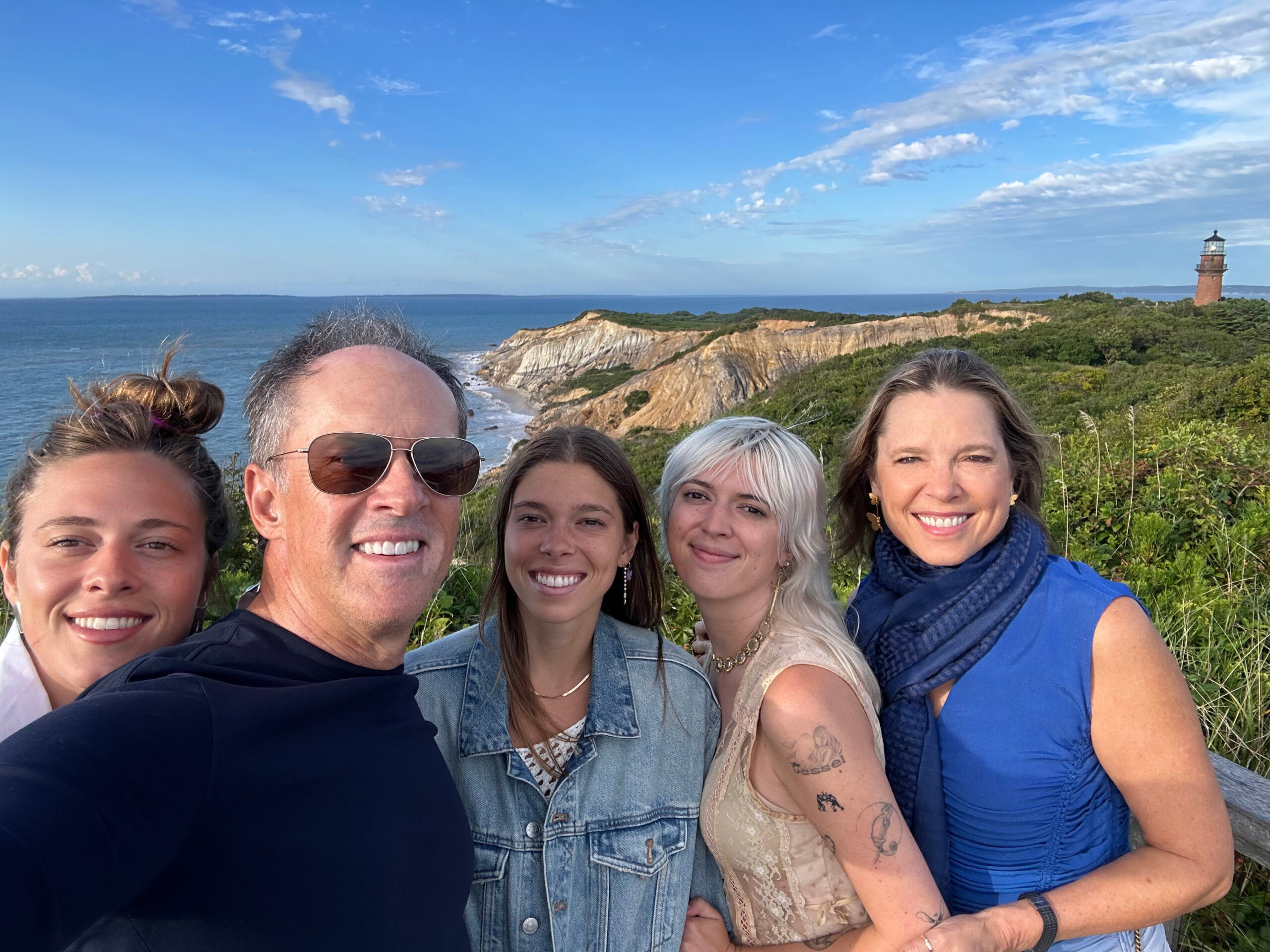
It used to be given to all patients for five years at a dosage that has menopause-like symptoms as a side effect. But a recent study showed that a much smaller dosage for three years can have the same effect in some patients. So that’s what I am doing.
.
Throughout my years at ESPN, I have done a lot of gratifying work with the V Foundation, much of it through my involvement with the ESPYs and the fundraising surrounding them.
My work took on an even deeper meaning when I lost my father to cancer.
Cancer truly touches everyone in some way.
I am well aware of how extremely fortunate I am.
In my case, being proactive about screening helped identify and treat DCIS. And I am not alone.
Currently, more than 60% of newly diagnosed breast cancers are early stage and usually detected by mammography before a doctor or patient can feel anything.
No less than 300,000 women will be diagnosed in the USA each year. Survival rates overall are approaching 90%.
Everyone’s cancer journey is different, so take from this story what you will, but if there is one thing I hope you take away with, it’s always to be your best advocate regarding your health.
Make screening for cancers a priority. Screening picks up cancers early and saves lives.
If you have a loved one in your life who isn’t doing that, please encourage them to do so. You never know what kind of difference it might make.
If you’d like more information, Dr. Port wrote a book that I found extremely helpful: “The New Generation Breast Cancer Book,” which is about navigating diagnosis and treatment options and remaining optimistic.
My researchers at ESPN know that I love stats and information; all the numbers used in this article come from the book.
EDITOR’S NOTE: The V Foundation funds game-changing research for all types of cancer and has invested over $34 million in breast cancer research grants. An estimated 313,510 new cases of breast cancer will be diagnosed in 2024; about 56,500 cases of female breast Ductal Carcinoma in Situ will be diagnosed in 2024. To learn more and to help the V Foundation achieve Victory Over Cancer®, visit v.org.
ABC News: SportsCenter anchor Hannah Storm reveals breast cancer diagnosis
People.com: ESPN’s Hannah Storm, 61, Reveals Breast Cancer Diagnosis: “I Had No Signs”
